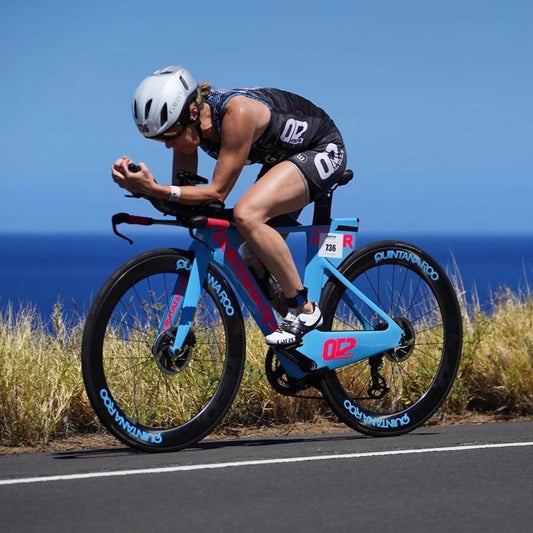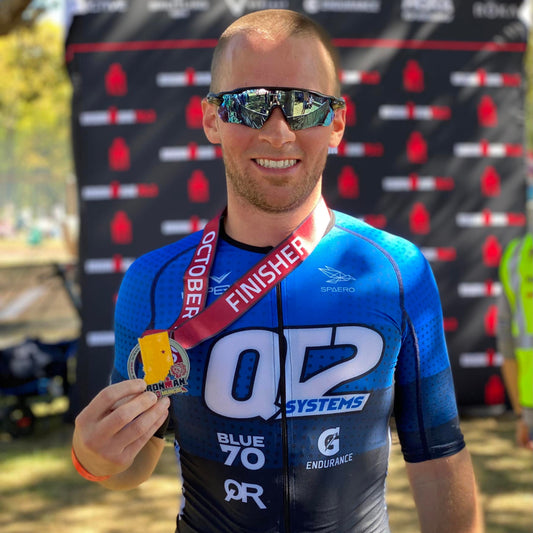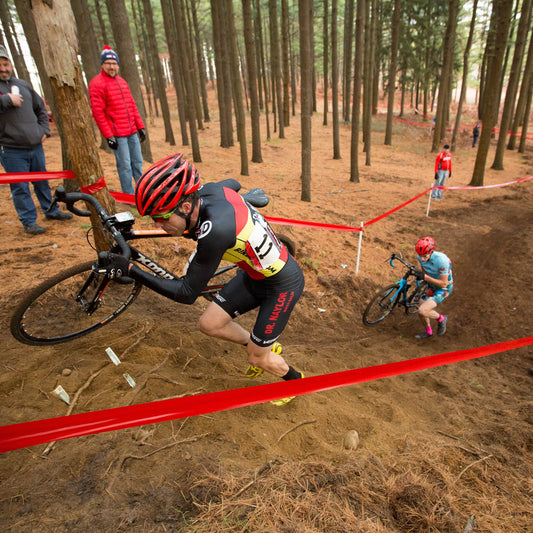I have been fortunate to have had the opportunity to work with a variety of athletes, their abilities ranging from beginner triathletes participating in their first event to experienced, elite age group athletes. Regardless of their experience or ability level, the common thread for all is their pursuit of a personal goal. Being integral to helping athletes achieve their personal athletic successes is highly rewarding. What makes it such a positive challenge is the fact that every athlete is different. Each athlete has different means and availability for training, differing levels of motivation, and individual attributes that make them respond to training stimulus differently. What is consistent, however, are a number of factors I believe will result in individual success. Outlined below are what I consider these top eleven factors to be. Why eleven? Because we know that #11 always misses out on the top 10 list.
1. Consistency
Consistency over time is what I try to remind my athletes of on a regular basis. It is not the missed workout here and there that will have a detrimental effect on performance. Rather, it is the ability to repeat workouts regularly over a given period that provides the greatest chance for reaching optimal performance. Athletes that work towards the steady approach tend to suffer less injuries due the durability that comes from regular repetition. The reward of having a few great standout workouts at the expense of many missed smaller workouts comes with great risk. Remember the mantra: “steady as she goes.”
2. An awareness of the big picture
It’s important to understand why you are doing what you are doing and when you should be doing it. This means having an annual plan that provides a high-level overview of the year to come. It is the road map towards the destination. Along with the annual plan is the outline of each training phase and its purpose. From here, individual weeks and sessions can be planned accordingly – all with the destination goals in mind.
3. Training within the guidelines of the session
As mentioned above, an understanding and outline of the big picture helps to provide purpose to individual training sessions. With this in mind, the major training principles of frequency, duration, and intensity should be manipulated based on where you are in relation to the goal you are working towards. If aerobic development is your primary goal of the phase of training that you are in, then most of the training should reflect this. The utilization of heart rate, power, and pacing zones help to provide the guidance as to the level of your personal work effort.
4. Being open to the utilization of different tools to achieve success
The tools you have in your toolbox won’t offer stand-alone success. Instead, they can be utilized to help provide different methods for understanding and acquisition of skill, monitoring workload and recovery, and even offering up tools for recovery (such as the Normatec recovery boots). There are many gadgets and equipment offerings available. Allowing yourself to understand their purpose and the variety they offer up might very well be the key to discovering just the right tool to help you have that next breakthrough workout.
5. Specificity where possible
Maybe you desire to race in the mountains of Lake Placid but live in the flats of Florida. Whilst this is doable, the challenge is the replication of the terrain and conditions that you will experience on race day. As you get closer to race day, the more specific the training should be as this will provide the necessary muscle adaptations, weather acclimatization, and thus confidence for success. Don’t be afraid to get creative to achieve specificity.
6. Volume to achieve durability
Regardless of distance, durability comes with consistency of volume. Especially important is when racing long-course distances. With durability comes a stronger musculature system that can handle the rigors of the training and racing. There is no point incorporating speed into your training if you don’t have the volume to know you can complete the distance. Speed combined with inadequate durability commonly leads to injury and burn-out. A well designed annual plan should get you to your most important race adequately prepared. If, during the planning, it appears that volume will be inadequate to achieve your goals then it might require some re-work of goals – this might be in terms of race selection or desired race day pace.
7. Allowing for recovery
When performance is the desired outcome goal, what we are attempting to achieve is a state in which adequate training stress is placed on the body to create a certain level of muscle breakdown and fatigue. The super-compensation effect happens when time is allocated for recovery. Giving the body and mind time for adequate recovery will illicit regeneration and repair which further results in performance improvements. As a rule of thumb, at least one day per week should be a rest day or very easy day with minimal stress on the body. This might consist of a swim only day, yoga or recovery ride. At times of high stress load, this may compromise of two days per week that are deemed as recovery days. The annual plan should also allow for recovery weeks every 3-4 weeks whereby total volume for the week should be approximately 50-60% of the preceding training week.
8. Nutrition
A well-balanced diet consisting of a range of color, texture and macronutrients will go a long way to helping you achieve the most in your workouts and also recover from them. Carbohydrates are essential for athletes since they provide the most efficient source of energy production and utilization. Of most benefit are carbohydrates prior to training to fuel the workout and then following training for recovery, with a preferred ratio of 4:1 or 3:1 carbohydrate to protein combination. The added protein will help in the repair and building of muscle. Most athletes should be consuming at least 50-60% of their diet in the form of carbohydrates. If you are looking to shed weight prior to race season, then nutrition timing becomes more valuable. Limiting simple sugars, starches and grains to windows prior to, during and immediately after workouts will help towards this.
9. Fueling strategies
Hydration and fueling with carbohydrates are necessary for both training and racing. Fluid lost through sweat happens when exercising. If more than 2% of body weight is lost through fluid loss, performance becomes adversely affected. For every pound of weight lost, 16 ounces of fluid should be replaced. The key is to fuel consistently with a combination fluid containing carbohydrates and electrolytes. The carbohydrates will help ensure that energy is available for use and the electrolytes will help balance the body’s need for minerals that are also lost through sweat. Knowing your sweat rate through sweat tests helps to dial in your individual fueling needs.
10. Attention to the F’s – Function, Form, Frequency, Fast
The body starts to breakdown when there are functional flaws or “kinks in the armor”. Focus first on how the body is functioning, and then looking at how the body moves in motion (i.e. form will go a long way towards determining when frequency can be increased). Once frequency is adequate and peripheral durability has been achieved then going fast can be incorporated into the training mix. Increasing frequency of training or going too fast when there are structural weaknesses will eventually appear over time as “niggles” and then, if no changes are made, present as injuries. Hitting the weight room with the help of a qualified professional is a great place to start.
11. Positive mental mindset
Now you will understand why this is a top eleven list. A positive mindset is essentially the emotional response to your training and racing. Training and racing with a positive mindset help to foster the cycle of success. Identify areas of negative thought and self-talk and work to change them through positive affirmations. The use of mantras, mental imagery, focusing on what can be controlled, cherishing the successes and finally, remembering why you set out to be involved in the sport all go a long way towards establishing a mindset that will help you through both the good and the bad times.
This post was written by Coach, Karen Allen Turner.





